An Audio-Visual Odyssey: Pink Floyd Exhibition Opens at V&A This Weekend
- LONDON, United Kingdom
- /
- May 11, 2017
On Saturday May 13, following years in the making, The Pink Floyd Exhibition: Their Mortal Remains will open at the Victoria and Albert Museum, London (V&A). This major spring exhibition marks the 50th anniversary of the band’s first album, ‘The Piper At The Gates Of Dawn’, and debut single, Arnold Layne. The exhibition is promoted by Michael Cohl and Iconic Entertainment Studios.
The Pink Floyd Exhibition: Their Mortal Remains, originally conceived by Storm Thorgerson and developed by Aubrey ‘Po’ Powell, who worked closely with Nick Mason (Consultant for Pink Floyd), is an audio-visual journey through 50 years of one of the world’s most iconic rock groups, and a rare and exclusive glimpse into the world of Pink Floyd. It features many previously unseen objects collected over the band’s eclectic history.
It begins with an oversized recreation of the Bedford van which took them from gig to gig in the mid 60’s. The scale and ambition of Pink Floyd’s imagery and live performances are encapsulated by several interactive, floor-to-ceiling installations by Stufish. From a massive representation of ‘The Wall’ stage set used during Pink Floyd’s original 1980-1 tour with the giant inflatable schoolteacher looming over ‘The Wall’ into the vaulted ceiling; visual trickery is adopted to create a parallax of Battersea Power Station complete with towering chimneys which is the London landmark pictured on the cover of Pink Floyd’s ‘Animals’ album, and a pitch-black space containing a holographic image bringing to life ‘The Dark Side Of The Moon’s famous prism.
The exhibition draws together many unique artefacts illustrating Pink Floyd’s relationship with music, art, design, technology and performance from every stage of their career and personal lives. Among the earliest exhibits is the punishment book and cane from the Cambridge And County High School For Boys, where Pink Floyd’s original guitarist and vocalist Syd Barrett and bass guitarist, vocalist and songwriter Roger Waters were pupils in the late 1950s.
Waters studied architecture at London’s Regent Street Polytechnic in the early ‘60s, alongside fellow co-founders, drummer Nick Mason and keyboard player/vocalist Richard Wright. Included here are Waters’ and Mason’s technical drawings and sketches, showing how the formal training they received later influenced the group’s creative ideas.
Pink Floyd’s earliest performing days are represented with Syd Barrett’s letter which includes a sketch of their Bedford van, and Nick Mason’s annotated gig diary detailing the future stadium-filling band’s humble beginnings, playing London’s underground music club UFO and touring Britain’s circuit of Top Rank ballrooms and college halls.
The Pink Floyd Exhibition offers a rare glimpse of the band’s working methods, and plots their transition from a psychedelic pop group in the 1960s to the multi-platinum-selling albums band in the ‘70s, ‘80s and beyond. These include a letter, dated August 1967, from the BBC to Pink Floyd’s booking agent requesting an explanation for Syd Barrett walking out of a recent recording session, and Roger Waters’ handwritten lyrics for the songs Wish You Were Here and Have A Cigar.
The exhibition also offers an in-depth look at the band’s instruments and technology. Several of David Gilmour’s guitars, including his famous Black Strat, are exhibited, alongside Richard Wright’s early- ‘70s era Mini Moog synthesiser and a treasure trove of effects pedals, hand-painted drum heads, echo chambers and more. Filmed interviews with the band members explain how this equipment was used to create Pink Floyd’s ground-breaking and experimental sound on albums such as ‘The Dark Side Of The Moon’, ‘Wish You Were Here’ and ‘The Wall’.
Meanwhile, the exhibition’s three purpose-built mixing desks allow visitors to ‘mix’ their own customised version of the classic Floyd song Money. As well as its recreations of ‘The Wall’ and Battersea Power Station, Their Mortal Remains celebrates all aspects of Pink Floyd’s iconic imagery, as seen on album covers and on stage. Original drawings and blueprints showcase the development of these images, and highlight the group’s close working relationship with a team of world-class designers, lighting engineers, architects and illustrators, including the Hipgnosis design partnership of Aubrey ‘Po’ Powell and the late Storm Thorgerson. These exhibits include the over 6-metre-high ‘metallic heads’ from the cover of 1994’s ‘The Division Bell’, the inflatable TV and refrigerator as used on Pink Floyd’s 1977 ‘In The Flesh’ tour; the ‘lightbulb suit’ pictured on the sleeve of 1988’s ‘Delicate Sound Of Thunder’ live album, and a life-sized model of the British soldier shown in the artwork for 1983’s ‘The Final Cut’ album.
The flow of the exhibition, in chronological order, is enhanced by music throughout and by the voices of past and present members of Pink Floyd, including David Gilmour, Nick Mason, Roger Waters and the late Richard Wright explaining their experiences and musical experimentation via sound specialist Sennheiser’s intuitive GuidePORT system. This culminates in the Performance Zone, where visitors enter an immersive audio visual space which includes the recreation of the very last performance of all 4 members of the band at Live 8 with Comfortably Numb. The track was specially mixed using Sennheiser’s ground-breaking AMBEO 3D audio technology.
The work of the band’s collaborators will also be explored, with original drawings, sketches, blueprints and photographs for the band’s album artwork, inflatable puppets and stage creations from individuals including illustrator Gerald Scarfe, architect Mark Fisher, engineer Jonathan Park, animator Ian Emes, lighting artist Marc Brickman and the design duo responsible for a number of Pink Floyd’s iconic album covers, Hipgnosis (Aubrey Powell and Storm Thorgerson).
The exhibition takes look at the band’s oeuvre through various lenses: psychedelia; musical, literary and artistic influences; musicology; politics; architecture, and the touring industry. Everyday material from the relevant eras (such as newspapers, books and adverts) will appear throughout the exhibition to put the ideas and themes Pink Floyd were exploring in their music into the social context of the day. These items will be displayed in telephone boxes, reflecting the theme of communication (or lack of communication) which frequently appears in Pink Floyd’s music, as well as offering an association with Battersea Power Station – which, along with the phoneboxes, was designed by the architect Giles Gilbert Scott.
Pink Floyd remain one of the world’s most successful and enduring rock bands. Since their inception in 1967, their sound evolved and changed many times, but their ability to communicate with an audience and address the wider world remains constant, as heard in landmark albums such as ‘The Piper At The Gates Of Dawn’, ‘The Dark Side Of The Moon’, ‘Wish You Were Here’ and ‘The Wall’. When Roger Waters left, the group continued recording with the much hailed, ‘The Division Bell’ and ‘The Endless River’.
The Pink Floyd exhibition is presented by the V&A and Michael Cohl’s Iconic Entertainment Studios, led by Pink Floyd’s creative director Aubrey ‘Po’ Powell (of the design partnership Hipgnosis) and Paula Webb Stainton, who worked closely with members of Pink Floyd including Nick Mason (Consultant For Pink Floyd). The V&A curatorial team is led by Victoria Broackes, Senior Curator, whose previous exhibitions include David Bowie is, and You Say You Want a Revolution? with Anna Landreth Strong, Curator, Department Of Theatre And Performance. The exhibition is a collaboration with designers Stufish, the leading entertainment architects and the band’s long-serving stage designers, and interpretive exhibition designers Real Studios.





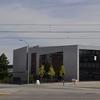



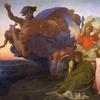
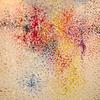
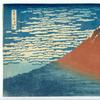

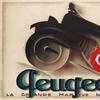
100x100_c.jpg)